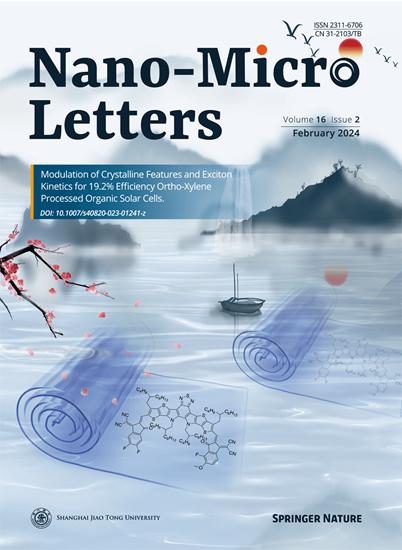热拉伸柔性光纤传感器:原理、材料、结构和应用。
IF 26.6
1区 材料科学
Q1 Engineering
引用次数: 0
摘要
柔性纤维传感器具有良好的可穿戴性和生物相容性,是柔性电子产品的重要组成部分。然而,传统的方法在制造低成本、大规模的光纤传感器方面面临挑战。近年来,热拉伸技术发展迅速,为柔性光纤传感器提供了新的途径。通过预制到光纤的制造技术,可以在短时间内实现从纳米级到千米级各种复杂功能的光纤传感器的自动化。例子包括温度、声学、机械、化学、生物、光电和多功能传感器,它们在不同的传感原理上工作,如电阻、电容、压电、摩擦电、光电和热电。本文概述了热拉伸过程的原理,并详细概述了各种热拉伸光纤传感器的最新进展。最后,对热拉伸光纤传感器的发展前景进行了展望。本文章由计算机程序翻译,如有差异,请以英文原文为准。
Thermally Drawn Flexible Fiber Sensors: Principles, Materials, Structures, and Applications.
Flexible fiber sensors, with their excellent wearability and biocompatibility, are essential components of flexible electronics. However, traditional methods face challenges in fabricating low-cost, large-scale fiber sensors. In recent years, the thermal drawing process has rapidly advanced, offering a novel approach to flexible fiber sensors. Through the preform-to-fiber manufacturing technique, a variety of fiber sensors with complex functionalities spanning from the nanoscale to kilometer scale can be automated in a short time. Examples include temperature, acoustic, mechanical, chemical, biological, optoelectronic, and multifunctional sensors, which operate on diverse sensing principles such as resistance, capacitance, piezoelectricity, triboelectricity, photoelectricity, and thermoelectricity. This review outlines the principles of the thermal drawing process and provides a detailed overview of the latest advancements in various thermally drawn fiber sensors. Finally, the future developments of thermally drawn fiber sensors are discussed.
求助全文
通过发布文献求助,成功后即可免费获取论文全文。
去求助
来源期刊

Nano-Micro Letters
NANOSCIENCE & NANOTECHNOLOGY-MATERIALS SCIENCE, MULTIDISCIPLINARY
CiteScore
32.60
自引率
4.90%
发文量
981
审稿时长
1.1 months
期刊介绍:
Nano-Micro Letters is a peer-reviewed, international, interdisciplinary, and open-access journal published under the SpringerOpen brand.
Nano-Micro Letters focuses on the science, experiments, engineering, technologies, and applications of nano- or microscale structures and systems in various fields such as physics, chemistry, biology, material science, and pharmacy.It also explores the expanding interfaces between these fields.
Nano-Micro Letters particularly emphasizes the bottom-up approach in the length scale from nano to micro. This approach is crucial for achieving industrial applications in nanotechnology, as it involves the assembly, modification, and control of nanostructures on a microscale.
 求助内容:
求助内容: 应助结果提醒方式:
应助结果提醒方式:


